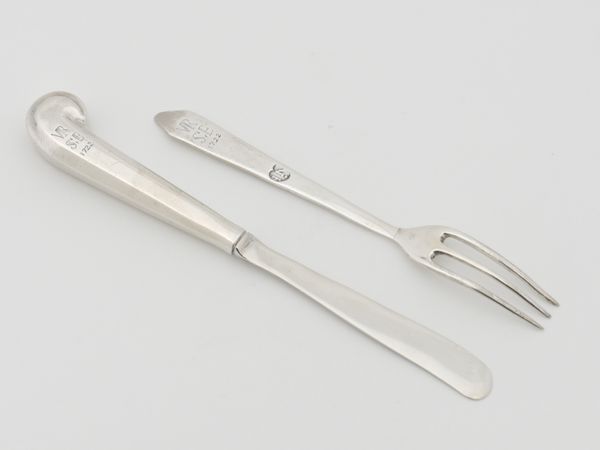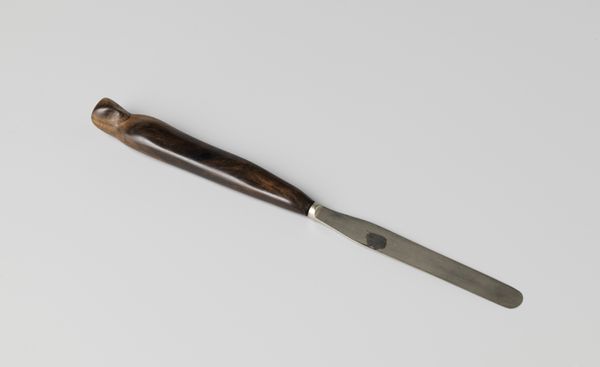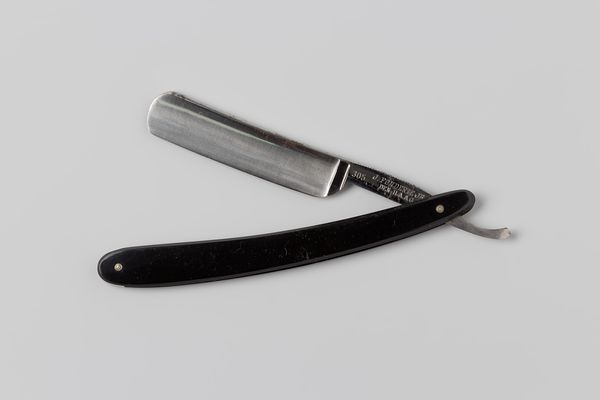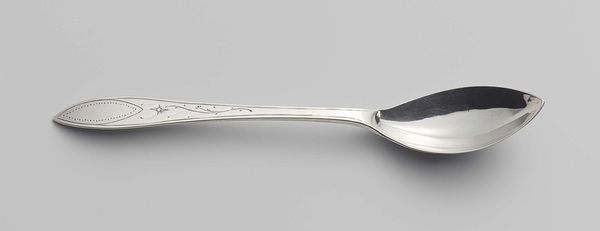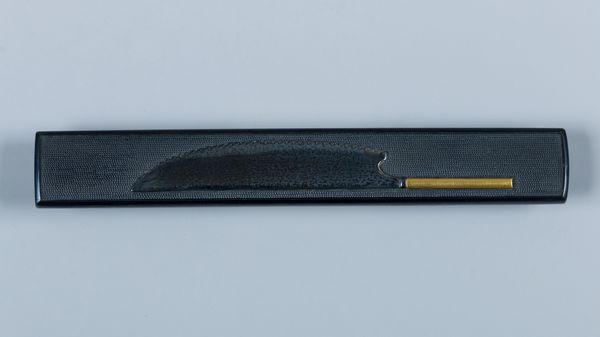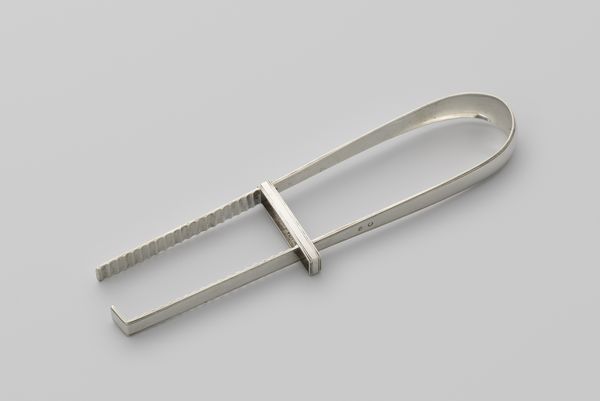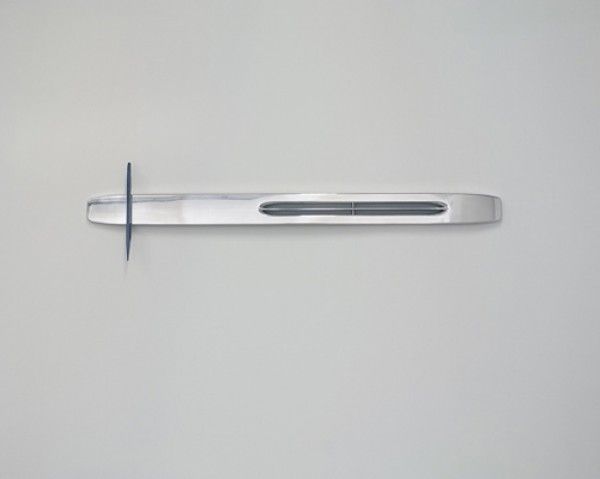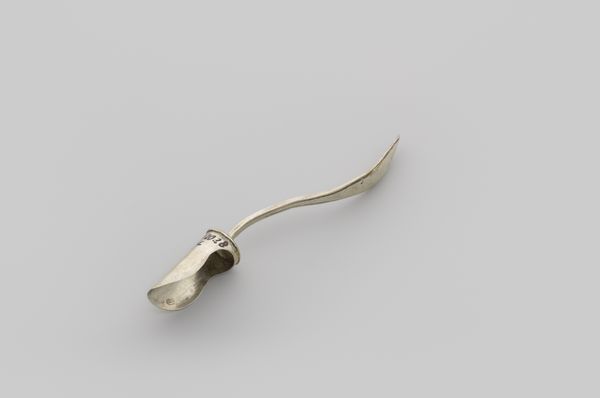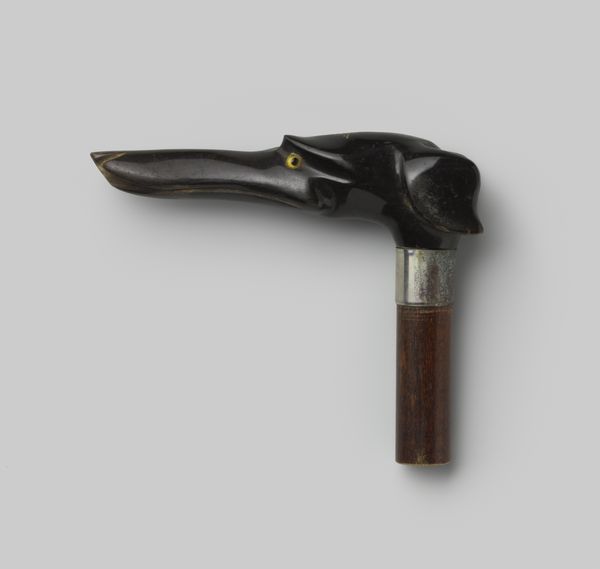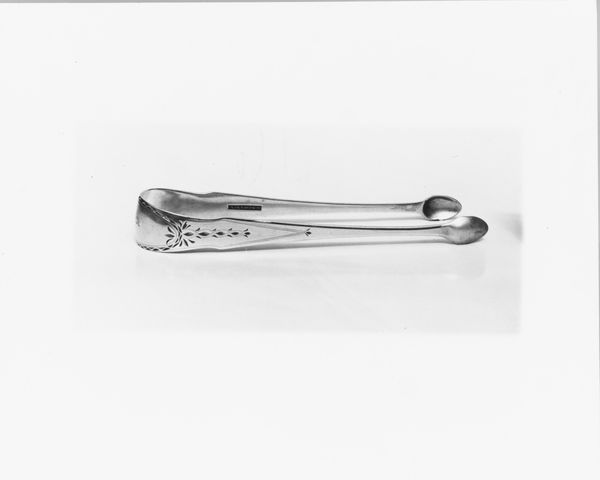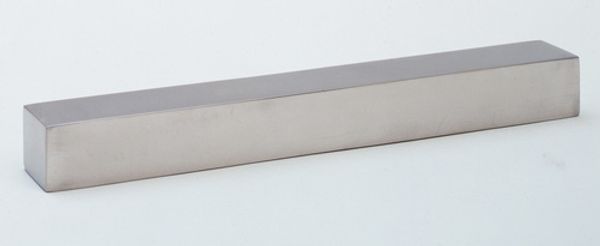
drawing, metal, photography
#
drawing
#
medieval
#
metal
#
japan
#
photography
#
armor
Dimensions: L. 13 5/8 in. (34.6 cm); L. of cutting edge 9 3/8 in. (23.8 cm); W. of blade at hilt 15/16 in. (2.4 cm); Wt. 7 oz. (185 g)
Copyright: Public Domain
Editor: So, this is a blade for a dagger, a Tanto, by Rai Kunitoshi, dating back to 1290-1341. The gleam of the metal is just striking, almost deceptively simple. What do you see when you look at this piece? Curator: I see more than just a beautiful object. This dagger represents a complex interplay of power, social status, and the role of the samurai in medieval Japan. The clean lines and highly polished steel speak to a culture of meticulous craftsmanship, but also, perhaps more subtly, to the performance of masculinity expected of warriors. Editor: Performance? How so? Curator: Think about it: The samurai class wielded enormous influence, but also had to constantly embody certain ideals. This wasn't just about fighting skill; it was about self-control, honor, and even aesthetic refinement. The dagger becomes an extension of that identity. Its sharp edge and elegant form reflects the way they presented themselves. What were the rules of engagement and how did your identity give you space for negotiation? Editor: That's a fascinating way to look at it. I usually just think about the physical object itself, the artistry and technique, but not the... social weight, I guess. Curator: Exactly! Consider also the societal expectations placed on women within samurai culture. While not typically wielding such weapons, their roles were vital in upholding family honor, sometimes even through acts of violence, thus creating parallels in performance of societal duties. This weapon isn't just steel, it's a symbol of cultural ideology and the construction of identity. Do you think, that having considered that it could be possible to still perceive and discuss its aesthetic value? Editor: Yes, absolutely. Understanding the historical and social context gives the artistry even more meaning. It transforms my initial appreciation of the visual and the artistic and creates further discussion points about societal rules of conduct, duty, identity. Thanks for opening up my perception about this work. Curator: Likewise. By interrogating the societal constructs embedded within seemingly simple objects like this, we are equipped to comprehend the intricacies of identity construction across both time and context.
Comments
No comments
Be the first to comment and join the conversation on the ultimate creative platform.
